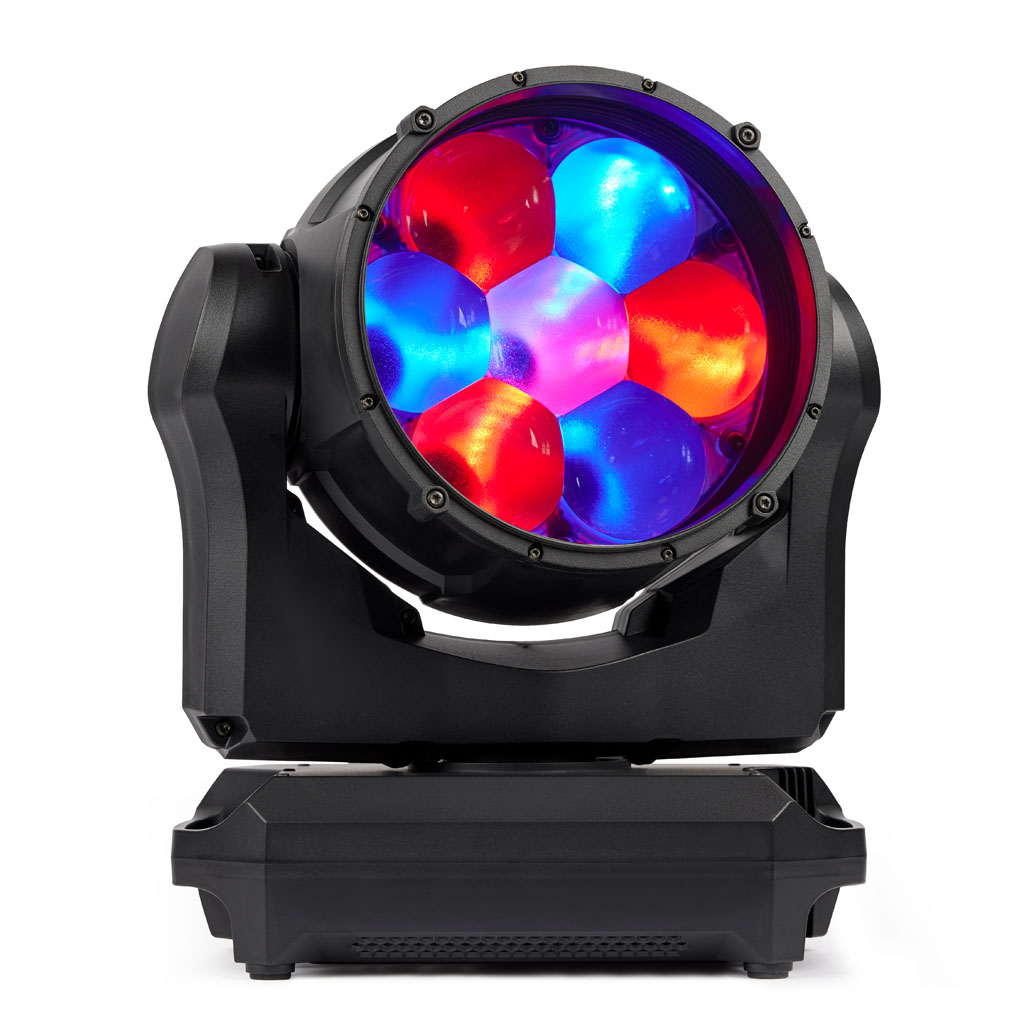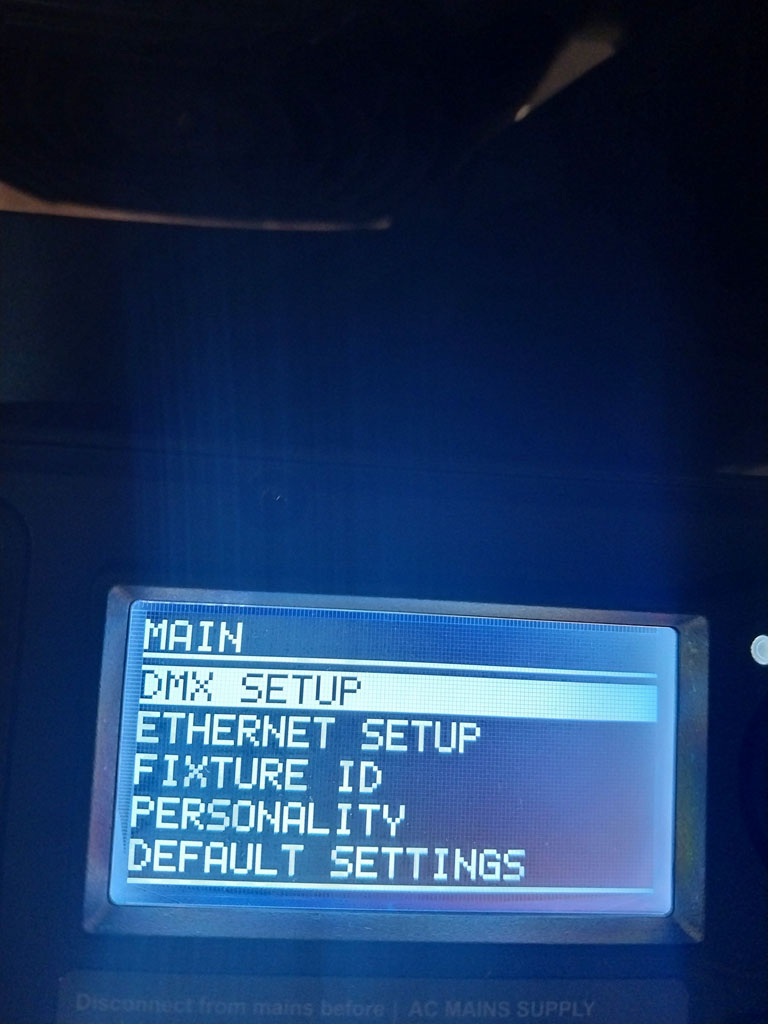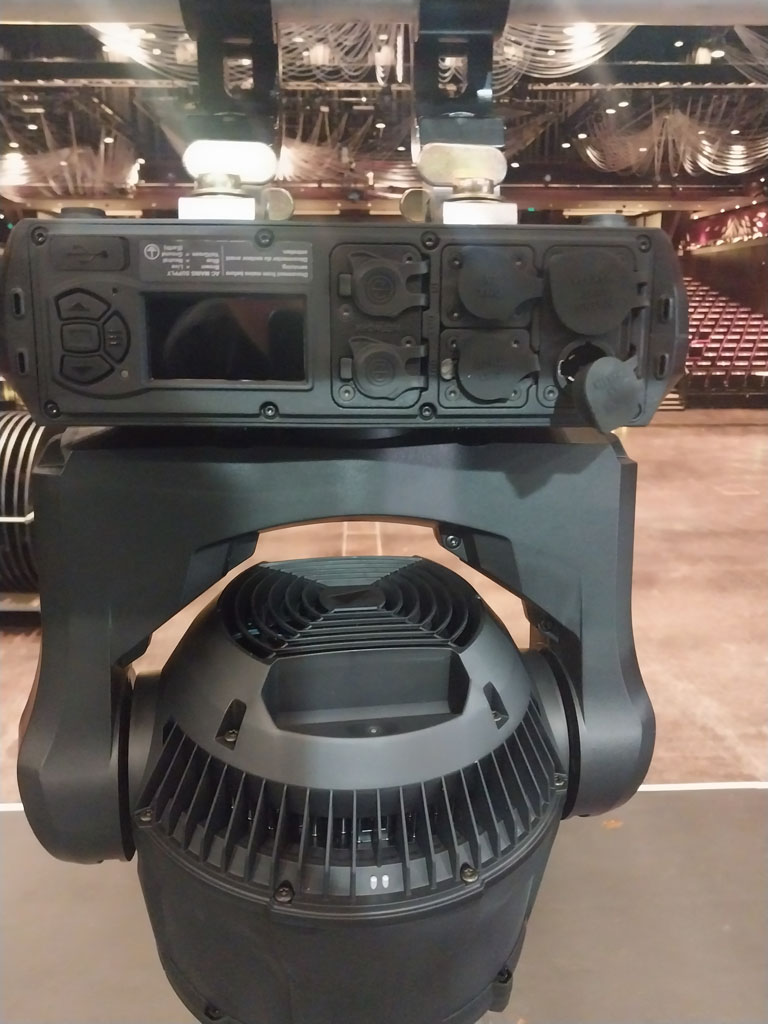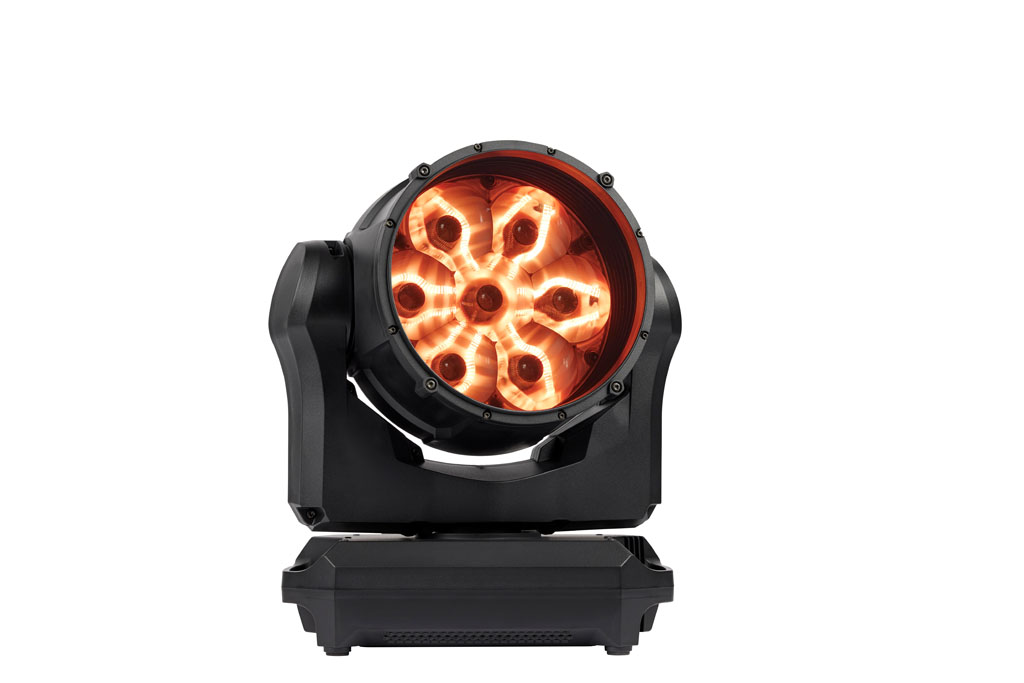ROAD TEST
25 Mar 2024
MARTIN MAC AURA XIP

Subscribe to CX E-News
The new moving-head wash light arrives on the MAC Aura scene, adding a new powerful sibling to this already impressive Martin range.
The Martin MAC Aura range of premium moving-head wash lights are a mainstay of the Martin LED wash light family, and its most recent addition is the impressive new Aura XIP, marketed by Martin as “A premium moving head wash light with a radical aura filament effect, and full pixel control with video mapping capabilities onto the beam and the aura.”
At first glance this reads as an updated IP-rated version of the MAC Aura XB; arguably Martin’s best-selling LED wash light. But there’s more to this light than that. The Aura XIP is the first fixture in its class to be rated for outdoor use. Optical quality has also been a real point of emphasis by Martin during the fixture’s recent development, and features here include an even wash field with soft edge, close to zero stray light, and high-intensity mid-air beams with improved light engine control.
With dimensions of 338 x 380 x 226mm, the overall weight a touch under 9kg, and a frontal lens diameter of 196mm, the MAC Aura XIP could be classified as a small to mid-sized wash light. It has a maximum power consumption of 340W, which means you can theoretically get up to seven of these fixtures to a XXA circuit.
The Light’s Construction
The MAC Aura XIP is made from a high impact, flame retardant thermoplastic, which gives the fixture an Ingress Protection Rating of IP54. With this has come a nearly 40 percent weight increase over the Aura XB. That said, we’re still talking about a light that’s under 10kg here that can be easily handled by just one person. To that end, the light even features two handles integrated tastefully into the design: one on the head, one on the base, for ease of handling and rigging.
The light fixture also provides an M12 thread hole and two omega attachment points, as well as mounting points on the front for accessories such as top hats and concentric rings, one of which is a SoftLens accessory that is included with the fixture that softens and slightly widens the light’s wash field.
It would seem that in 2024 the concept of an IP-rated moving light is within the remit of almost any lighting manufacturer. The next step from here is to make a fixture that’s less cumbersome and more stylish, which Martin have certainly achieved with the XIP.
Optics, Colour & Brightness
The MAC Aura XIP is everything we’ve come to expect from a MAC Aura product over the years. It’s an LED wash light featuring RGBW colour mixing with an output that punches well above its weight at 6,000 lumens – not bad for a 9kg-odd, IP-rated light! The XIP produces a smooth, flat, even wash field with zero hotspots and little colour temperature variance over the field, making it a fantastic wash or front light for filming applications.
The beam features seven 60W RGBW LEDs, while the aura is made up of 12 4W RGBW LEDs. The fixture has a very respectable 8:1 zoom ratio, translating to a 6.3 – 50.4˚ zoom range, taking it from almost a pinspot all the way out to a wash, with minimal stray light spilling out the sides when at full zoom – an issue Martin has worked hard to achieve.
The Aura XIP can be run in calibrated and extended colour modes, with variable colour temperature from 1,000K all the way up to 12,850K. It also has a tungsten emulation option, which aims to emulate the colour and dimmer curve of a tungsten fixture, making it a good fit for both film and theatre.
Applications & Features
On most IP-rated moving head fixtures you often hear mechanical noise. Once a moving light has gone through its typical start-up procedure and becomes operational, most mechanical noise typically comes from the cooling system and motorised movements such as pan, tilt and zoom. With the XIP, meanwhile, emphasis has been placed on keeping the moving wash as quiet as possible, and to that end the unit features its own ‘quiet mode’.
In ‘quiet mode’, the Aura XIP can put out just 25.2dB(A) of noise. Admittedly, this comes at the cost of some performance compromises, including speed of movement. However, if your priority under certain conditions is to minimise operational noise – on a TV set or theatre stage perhaps – you’re probably not looking for lightning-fast pan and tilt movements anyway, particularly if it comes at the cost of mechanically generated noise.
MAC Aura XB vs MAC Aura XIP
Aura XIP MAC Aura XB
Weight 8.95kg 6.5kg
Dimensions 338 (W) x 380 (H) x 226 mm (D) 302mm (W) x 390mm (H) x 163mm (D)
Output 6,000 lumens 6,000 lumens
Power consumption 340W 400W
In ‘quiet mode’, the Aura XIP can put out just 25.2dB(A) of noise. Admittedly, this comes at the cost of some performance compromises, including speed of movement. However, if your priority under certain conditions is to minimise operational noise – on a TV set or theatre stage perhaps – you’re probably not looking for lightning-fast pan and tilt movements anyway, particularly if it comes at the cost of mechanically generated noise.
The XIP can also be video mapped: both beam and aura, either separately or simultaneously. The ability to run video content through the light opens it up to a wide range of possibilities for lighting designers, making the fixture suitable for a vast array of applications such as TV, concerts and touring productions.
And when it needs to, the XIP can move fast, with a pan range of 540° and a tilt range of 220°, making it a great fit for nightclubs, festivals and concerts.
Lighting manufacturers love using metrics and ratios to market and promote their latest equipment, of course. An up-and-coming ratio we might need to place in our vernacular in the foreseeable future is the ‘LWR’ metric, also known as Lumen-to-Weight Ratio. As the name suggests, this metric describes how many lumens of light output per kilogram a lighting fixture produces (akin to a boxing division perhaps, or a car’s performance). Effectively, it’s an efficiency ratio – the higher the number the better. Although not listed on all lighting spec sheets (well, not yet anyway), this figure can be determined by dividing the lumen output of any given fixture by its weight, in kilograms. The LWR for the MAC Aura XIP is a punchy 670lm/kg.


Control & Programming
The MAC Aura XIP can be run in six different DMX modes, including: Compact (20-channel), Basic (36-channel), Extended (57-channel) and Ludicrous (93-channel). It can also be run identically as a MAC Aura XB, with XB Standard (14-channel) as well as XB Extended (25-channel).
16-bit controllable parameters include: dimming, beam colour mixing, zoom, pan and tilt. There’s also an option of four dimming curves as well as a variable green/magenta shift, which works impressively for lighting people on camera.
The control display panel on the light itself is battery powered too, so lights can be addressed and settings manually changed without the need for connected power.
The XIP can be controlled via five-pin DMX in and thru as well as Ethernet in and thru. Ethernet supports Art-Net, sACN and Martin P3, and comes fitted with Martin’s own Ethernet Fail-Safe technology, which forwards data to the next unit in series even when a unit is powered down. RDM is available over DMX as well as Ethernet over Art-Net.

The Verdict
One ‘compromise’ worth noting with the Aura XIP is its IP54 rating. Most other IP-rated lights we’re seeing on the market nowadays generally have an IP rating of 65.
The question to be asked here would be: what IP rating is suitable for a lighting fixture? For instance, an IP67 rating sounds great on the surface, but this would inevitably come at an increased cost in both weight and expense, as well as be more time consuming to handle and set up, while offering less performance compared to, say, an IP20 fixture.
In more relevant lighting fixture terms, is there genuinely that much difference between an IP65 and IP54 rating? And in practical terms, how many applications can you think of where an IP65-rated fixture would cut it but an IP54- rated equivalent would not? Applications around a permanent or semi-permanent outdoor installation perhaps, or during a torrential downpour? One way or another, IP- rated lights are becoming more commonplace and I suspect we may see manufacturers toy around with these ratings to see what’s the most marketable.
With the MAC Aura XIP, Martin has taken one of its best-selling lights (the Aura XB), updated its features and its LEDs, and increased the IP rating, while at the same time restricting it to a similar footprint. It’s a safe play by Martin, who frankly didn’t need to do anything drastic to an already popular wash light.
Infinite pan and tilt features on the Aura XIP would have been nice to see perhaps.
Meanwhile, it will be interesting to see if Martin decides to scale up and create a larger MAC Aura of similar size to a Quantum Wash.
With the XIP now in play, it looks as though the Aura family will be amongst the leaders in small- to mid-sized LED wash lights for the foreseeable future.
MAC Aura XIP – Specs
6,000 lumens RGBW light output High narrow intensity: 360,000 cd Pixelated Beam: 7 x 60W RGBW LEDs Filament Aura: 12 x 4W RGBW LEDs
Optics
- 6.3˚ – 50.4˚ zoom
- SoftLens Accessory included
- Colour Palette
- Calibrated and Extended Colour Modes Calibrated CTC control: 1,000 – 12,850K Green Magenta Shift (Tint) Control Tungsten Emulation Option
- Virtual Colour Wheel
Dynamic Effects
- More than 200 built-in FX Macros with control of foreground and background colour, speed and direction
- P3 video mapping of fixture Beam pixels and/or Aura filaments
- P3 Mix allowing crossfade between video and DMX looks
- High-speed pan, tilt and zoom
Physical
- Weight 8.95kg
- Dimensions: 338 x 380 x 226mm
Subscribe
Published monthly since 1991, our famous AV industry magazine is free for download or pay for print. Subscribers also receive CX News, our free weekly email with the latest industry news and jobs.




